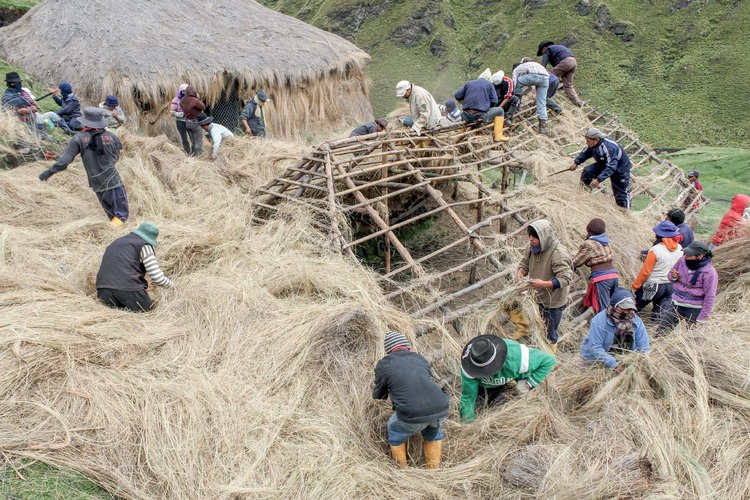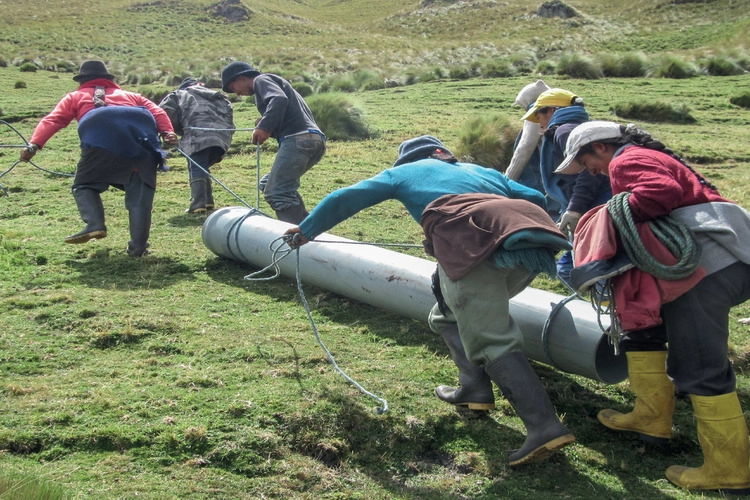
The communal spirit of an Indigenous community highlights the importance of working together for the greater good
By
In the ancestral community of San Isidro, near the town of Pujilí in Ecuador, lies a fascinating insight into the power of community spirit and resilience. The Indigenous community that live there – seeking social and environmental justice – utilise communal work amongst residents in order to maintain and build shared infrastructure, in processes referred to as ‘mingas’.
What are mingas?
With origins in Inca culture, mingas are often coined as collective work parties and are a form of co-operative labour. Lasting anywhere from a few hours to days, mingas are based on reciprocity and unpaid, voluntary, or obligatory participation.
In San Isidro, mingas often focus on maintaining the community’s irrigation water pipeline, and are included in community bylaws as a form of participation in community life along with regular meetings, collective consultations, and council elections. They are deeply social events, bringing together people to share food, jokes and conversation.
One particular minga that the San Isidro ancestral community has collaborated on is relocating a thatched hut. The first step of the process involves moving the straw thatch from the underlying wooden frame – constructed using nails and rope made by hand from the dried fibres of agave plants.

The next step of the minga is burning the old straw of the thatched roof, disassembling it into three parts and then moving it, a difficult process made all the more demanding as residents undertake this task uphill and without any equipment. Once relocated, the roof is then reused in a new location, chosen for its proximity to an alpaca corral and other huts used for storing tools.

San Isidro’s irrigation water pipeline
The unique flora and soil systems of the páramo – a high-altitude wetland ecosystem found only in the northern Andes – make it a vital source of drinking water for millions of people in the region. For the San Isidro community, these páramo streams are also the source of the community irrigation water system. The area of páramo managed collectively is known by its Kichwa language name, ‘Chilca Tingo Chaupi Urku’.

Funded initially by a government grant and completed in 2010, all ongoing maintenance work to San Isidro’s irrigation water pipeline is undertaken by the community through mingas. In the image above, San Isidro residents use rope to carry plastic piping that will eventually replace a section of the irrigation water pipeline damaged by a landslide. These areas of the páramo are only accessible on foot or on horseback, and so all construction materials have to be carried by community members or their pack animals.
Other activities that are performed in order to maintain the pipeline include cleaning out accumulated silt from the bottom of irrigation reservoirs, as shown below.

Many other examples of mingas undertaken by the San Isidro community have been captured by Tristan Partridge, author of Mingas+Solidarity in his latest photobook.
‘Since 2011, I have been working with friends in the Indigenous community of San Isidro to document their struggles for social and environmental justice — and ‘mingas’ are central to these efforts,’ said Partridge. ‘What began as fieldwork in social anthropology has become an ongoing project to share, and to celebrate, the dynamics of collective work.’
The images in this article are from Tristan Partridge’s new photobook, Mingas+Solidarity, available here.




